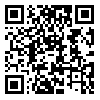BibTeX | RIS | EndNote | Medlars | ProCite | Reference Manager | RefWorks
Send citation to:
URL: http://jbrms.medilam.ac.ir/article-1-243-en.html

 , Fatemeh Bahramnezhad
, Fatemeh Bahramnezhad 
 , Mohammad Golitaleb
, Mohammad Golitaleb 
 , Fatemeh Salehi
, Fatemeh Salehi 
 , Razieh Mokhtari
, Razieh Mokhtari 
 , Fatemeh Rafiei
, Fatemeh Rafiei 

Introduction: Menopause is associated with complications that can affect women's attitudes. Women's attitudes toward menopause can help to improve their performance and reduce the severity of its complications. The aim of this study was to evaluate the effect of Glycyrrhiza glabra (G. glabra) plant and exercise on the attitude of menopausal women.
Materials and methods: This clinical experimental fourth group was conducted between October and March 2015 in Arak, Iran. 120 menopausal women were randomly selected and divided into four groups each containing 30 women. The first group had three G. glabra tablets daily for one month, the second group had a regular exercise program three times a week for 30-45 minutes for one month and the third group simultaneously took G. glabra like Group1 and followed exercise programs like Group 2 and the fourth group received no intervention. Before and one month after the intervention attitudes of women were compared with a researcher-made questionnaire. ANOVA, Chi-square and Paired t tests were used to analysis the data.
Results: The results showed no significant difference between four groups in demographic characteristic. ANOVA results showed no significant difference between four groups in the attitude score of women before the intervention (P=0.937), but after the intervention there were significant differences between the groups (P=0.0001).
Conclusion: According to the results, G. glabra consumption and exercise program were effective in controlling the symptoms of menopause attitude of menopausal woman. Therefore, it may proposed as one of the main strategies for health and education interventions.
Received: 2016/03/7 | Accepted: 2016/11/9 | Published: 2017/03/19
| Rights and permissions | |
 |
This work is licensed under a Creative Commons Attribution-NonCommercial 4.0 International License. |



